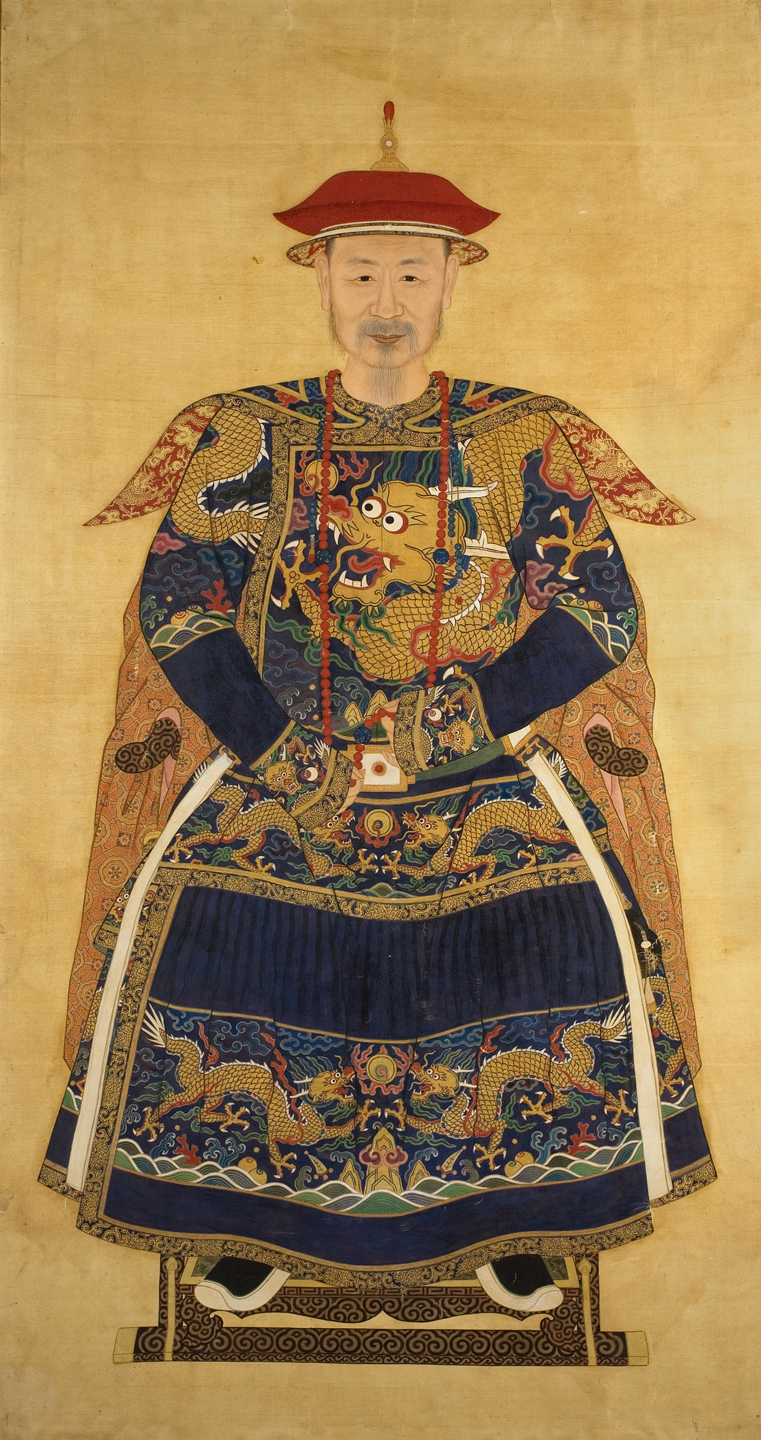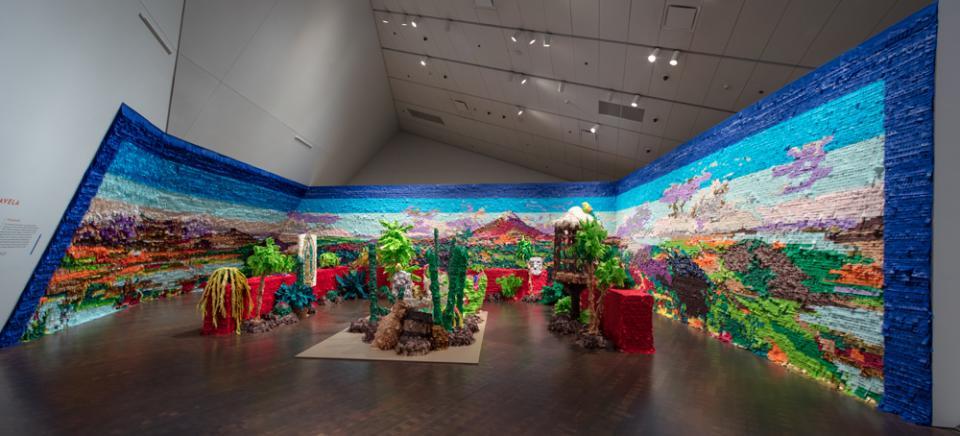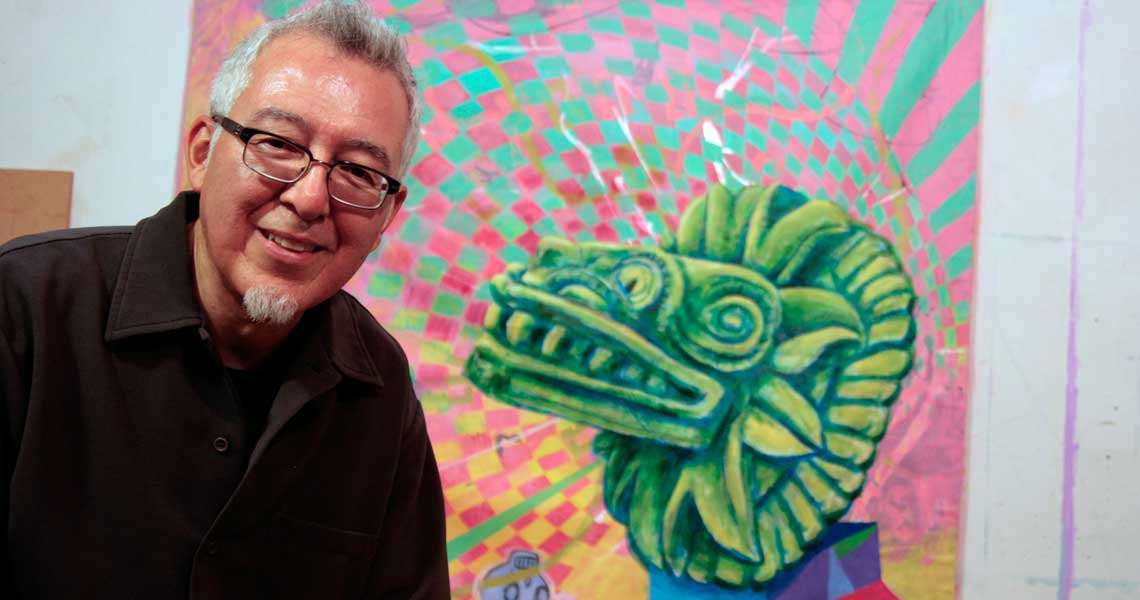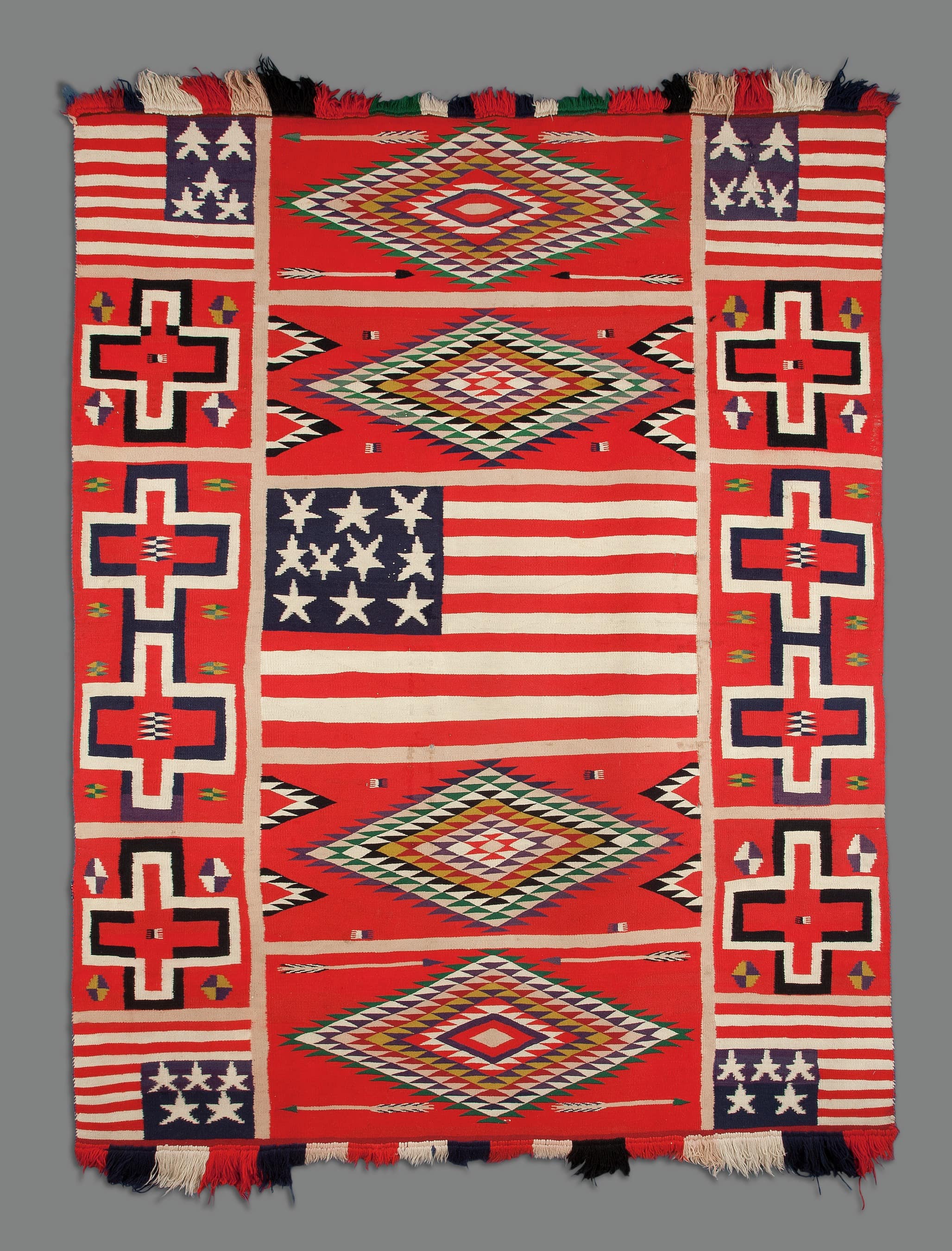Students will discuss the impact of color in Sandy Skoglund’s Fox Games. Limiting their palette to a specific color, they will gather images with which to make a collage.
Students will be able to:
- differentiate between relevant and non-relevant information involved in color choice;
- use positional phrasing to describe the spatial relationship of items in Fox Games and in their own artwork;
- create a collage with only one or two colors;
- experiment with composition and placement of collaged items; and
- practice using art making materials and tools.
Lesson
- Show the students the image of Sandy Skoglund’s Fox Games. Have the students point to and say what they can see in the image. Share information from About the Art. Using the images from the "Details" section, point out the details students may not have noticed. Have students describe the location of the items, especially those crazy foxes, using words that indicate spatial relation such as “on top of the table," or “under the table.” This helps students begin to consider compositional placement in a work of art.
- Explain to students that this is an image of an artwork at the museum made up of tables, chairs, and toy foxes, and that visitors to the museum can walk right through the middle of it! Have students imagine what it would be like to walk through it and look over the tables and around the chairs, etc.
- Explain that the artist likes to create a picture of something like a dream where parts of it are realistic, but other parts are fantasy. You might wish to have a conversation about the differences between realistic and fantastic elements and offer examples of them. Ask students if they have ever had a dream where something seemed real, but then really strange things started to happen that were not real.
- Bring the conversation back to the image and point out how Skoglund used color in Fox Games. Ask students to identify the colors they see. Point out that there are only two colors used in the image. You might want to explain that one of these colors, red, is a primary color. Point out primary colors on a color wheel (an example of a color wheel). The other color is gray. Ask students how they feel about these colors. Does one color feel more powerful than the other? Why do you think the artist chose to limit the artwork to two colors? How does it change how the image might have looked if it were many colors?
- Tell students that they will create an artwork with only two colors. Or, alternatively, you might choose to have students work with only one powerful color. Students will work in groups. Assign or let each group choose two colors. You might choose from primary or secondary colors to work in a discussion about characteristics and expressive features of art and design.
- Allow students to look through magazines or other decorative papers and cut or tear out images of things that are their assigned colors.
- After students have spent time cutting out things that are these two colors, give each group a piece of construction paper that is also in their same color palette. Ask them to arrange the images to tell a dreamlike story and glue them to the paper.
- Ask students what they would title their collages and have them share their collages with the class.
Materials
- About the Art section on Sandy Skoglund’s Fox Games
- Color copies of Fox Games for students to share, or the ability to project the image onto a wall or screen
- Optional: Access to a color wheel for all to see
- Optional: Magazines and decorative papers with images in various colors for students to choose from
- Optional: Scissors
- Optional: Glue or glue sticks
- Optional: Construction paper
Standards
- Social Studies
- Geography
- Develop spatial understanding, perspectives and connections to the world
- Visual Arts
- Invent and Discover to Create
- Observe and Learn to Comprehend
- Relate and Connect to Transfer
- Envision and Critique to Reflect
- Language Arts
- Research and Reasoning
- Collaboration
- Critical Thinking & Reasoning
- Information Literacy
- Invention
- Self-Direction

Fox Games
- Sandy Skoglund, American, 1946-
- Born: Weymouth, MA
- Work Locations: New York, NY
Sandy Skoglund attended Smith College in Massachusetts and graduate school at the University of Iowa. She was interested in a variety of artistic disciplines and studied filmmaking, printmaking, and multimedia art. Skoglund moved to New York City in 1972 and developed an interest in photography as a way to document her large-scale pieces. Skoglund’s combination of interests is demonstrated in the hybrid of elements she uses to create her pieces, which are usually elaborate and immersive installations of imaginary, sometimes outlandish scenes. She uses aspects of theater to set the stage and cast of characters, sculpture to create interesting spaces, and paint to add bold color. Skoglund says, “If I had to say anything about my work, I think it would be that it’s almost a theme park. You can experience it in many ways.”
With much of her work, the final product has been a photograph of a meticulously staged installation rather than the actual installation itself. But Fox Games is the installation itself. The Denver Art Museum was the first museum to acquire the installation in addition to the photograph of the installation.
In Fox Games, viewers are physically immersed in the work of art as they are able to wander through the installation. “I use familiar spaces… and elements like furniture to take viewers out of the museum and place them in… a place that feels familiar to them. Then I interfere with that reality by changing the elements, changing them in terms of materials,” Skoglund says. Her artworks often take the ordinary and make it into an almost dreamlike fantasy. In this piece Skoglund submerges the viewers in a completely red environment and incorporates animals into what is normally a setting used strictly by humans. According to Skoglund, the foxes are not experiencing this environment in the same way humans would. “The foxes don’t see tables, they don’t see chairs, they don’t know they’re in a restaurant. They just experience different levels of height to jump on.”
Skoglund tries to create multiple meanings for her viewers. This piece could be a statement about how strange the familiar spaces in our lives can be. It might also be a humorous take on our tendency to go through life unaware of the magic in the spaces we move through every day. For Skoglund, it’s all about allowing viewers to participate in the process of making sense out of what they are seeing.
Details

Color
The entire restaurant scene is coated in a flat, red paint, while all of the foxes (with the exception of one red fox) are gray. For some viewers, as their eyes adjust to the all red environment, the gray foxes become a glowing green.
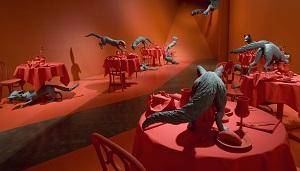
Details
Skoglund includes lots of details in the red restaurant scene, which contains about 700 parts. A partial inventory includes 10 tablecloths, 20 chairs, 15 bread baskets, 124 rolls and breadsticks, salt shakers, forks, knives, plastic flowers, vases, a squirrel, 27 gray foxes, and 1 red fox. All the details of a typical restaurant setting are there (along with some clearly unusual ones!)—the only thing that’s missing is humans.

Several Happenings at Once
The foxes in this piece have completely taken over the restaurant. Notice a fox in mid-air as it leaps between tables. Others lurk around on the ground or pounce and play together.
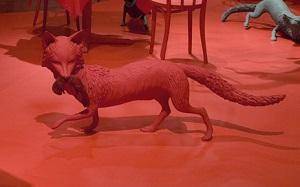
Squirrel
One of the foxes holds a red squirrel in his mouth.
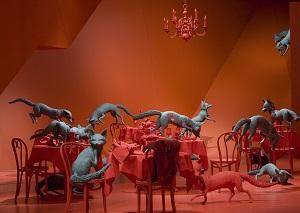
Repetition
There are many repeated figures in this piece: tables, foxes, wine glasses, and chairs, among others. There are even multiple foxes in the same position dispersed throughout the installation.
Funding for object education resources provided by a grant from the Morgridge Family Foundation. Additional funding provided by the William Randolph Hearst Endowment for Education Programs, and Xcel Energy Foundation. We thank our colleagues at the University of Denver Morgridge College of Education.
The images on this page are intended for classroom use only and may not be reproduced for other reasons without the permission of the Denver Art Museum. This object may not currently be on display at the museum.
